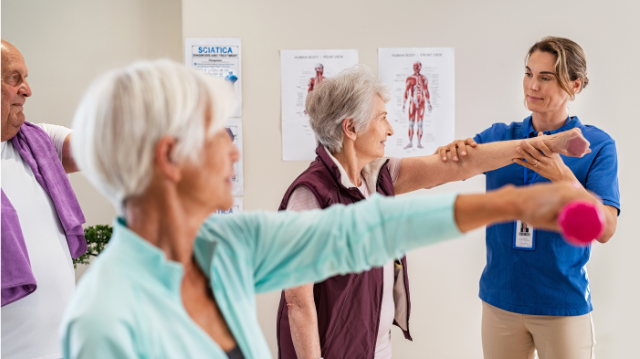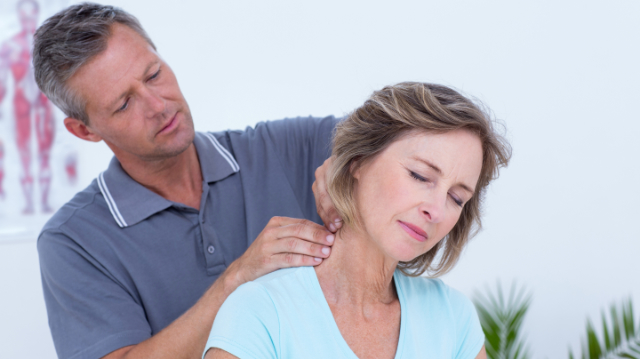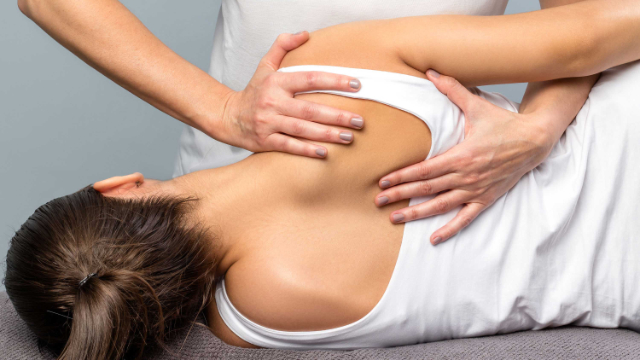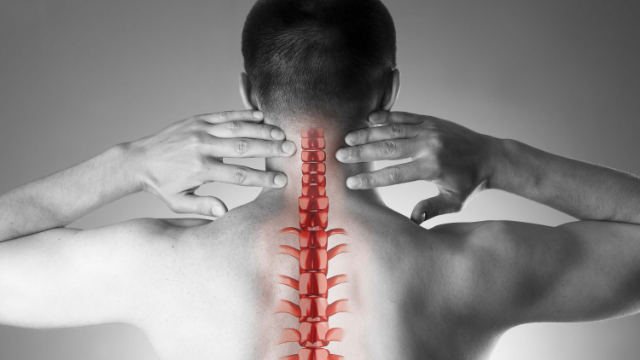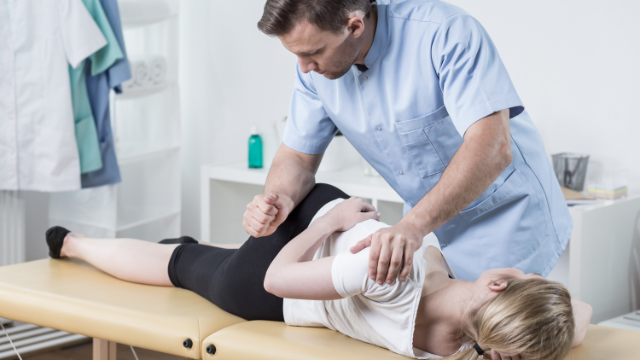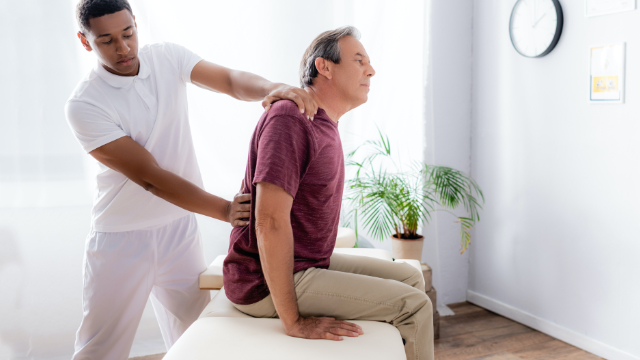
One of the few common shoulder diagnoses that does not directly involve the rotator cuff is adhesive capsulitis, or frozen shoulder. This condition occurs when scar tissue forms within the shoulder, causing the shoulder capsule to thicken and tighten around the shoulder joint and reducing the amount of space for the shoulder normally. Although frozen shoulder affects up to 5% of the population, the reasons why it develops are not yet clear. Common consensus suggests that not moving the shoulder normally for long periods is a leading factor, as most people who get frozen shoulder have kept their shoulder immobilized due to a recent injury, surgery, or pain. People between the ages of 40–60, women, and patients with arthritis, diabetes, cardiovascular disease, and other health conditions are also more likely to develop frozen shoulder.
Frozen shoulder usually comes on slowly and gets progressively worse over time with more pain and loss of motion. It is typically divided into the following four stages:
- Stage 1: consists of the onset of symptoms, which gradually get worse over 1–3 months
- Stage 2: the “freezing” stage, which generally occurs 3–9 months after symptoms begin and is very painful
- Stage 3: the “frozen” stage, which involves the shoulder becoming even more stiff and difficult to move
- Stage 4: the “thawing” stage, which occurs within 12–15 months and involves pain decreasing significantly and range of motion starting to improve
Physical therapy is commonly recommended for frozen shoulder because it is an effective intervention that addresses symptoms at every stage; however, certain questions about the exercises used in physical therapy remain unanswered. Therefore, a comprehensive study called a systematic review and meta–analysis was conducted to 1) compare the effectiveness of exercises alone and exercises in combination with other interventions and no exercises and 2) determine what kind of exercises are most effective for frozen shoulder.
33 studies evaluating exercise therapy for frozen shoulder are reviewed
To conduct the study, researchers performed a search of three medical databases for relevant studies about the effectiveness of exercise therapy for frozen shoulder. This led to 33 studies being accepted into the review, which saw patients treated with a variety of exercises, including individually prescribed exercises and those prescribed as part of a comprehensive treatment program. The findings of all included studies were then reviewed and analyzed with the goal of answering the two stated research questions.
Results showed that exercises—both on their own and as part of a program—improved range of motion (ROM), function, disability, and pain, and the type of exercise performed had little to no impact on these improvements. Also, adding physical modalities—like ultrasound, ice, or heat—to exercises did not provide any benefits to treatment outcomes, and programs that included exercises resulted in larger active ROM gains than programs that did not. These findings support the effectiveness of physical therapy for frozen shoulder and suggest that the type of exercises performed and whether they are done alone or combined with other interventions may not be important, so long as they are featured in a rehabilitation program.
Therefore, if you’re currently dealing with symptoms that sound like frozen shoulder, we strongly recommend contacting us to schedule an appointment and getting started on a path to recovery.


